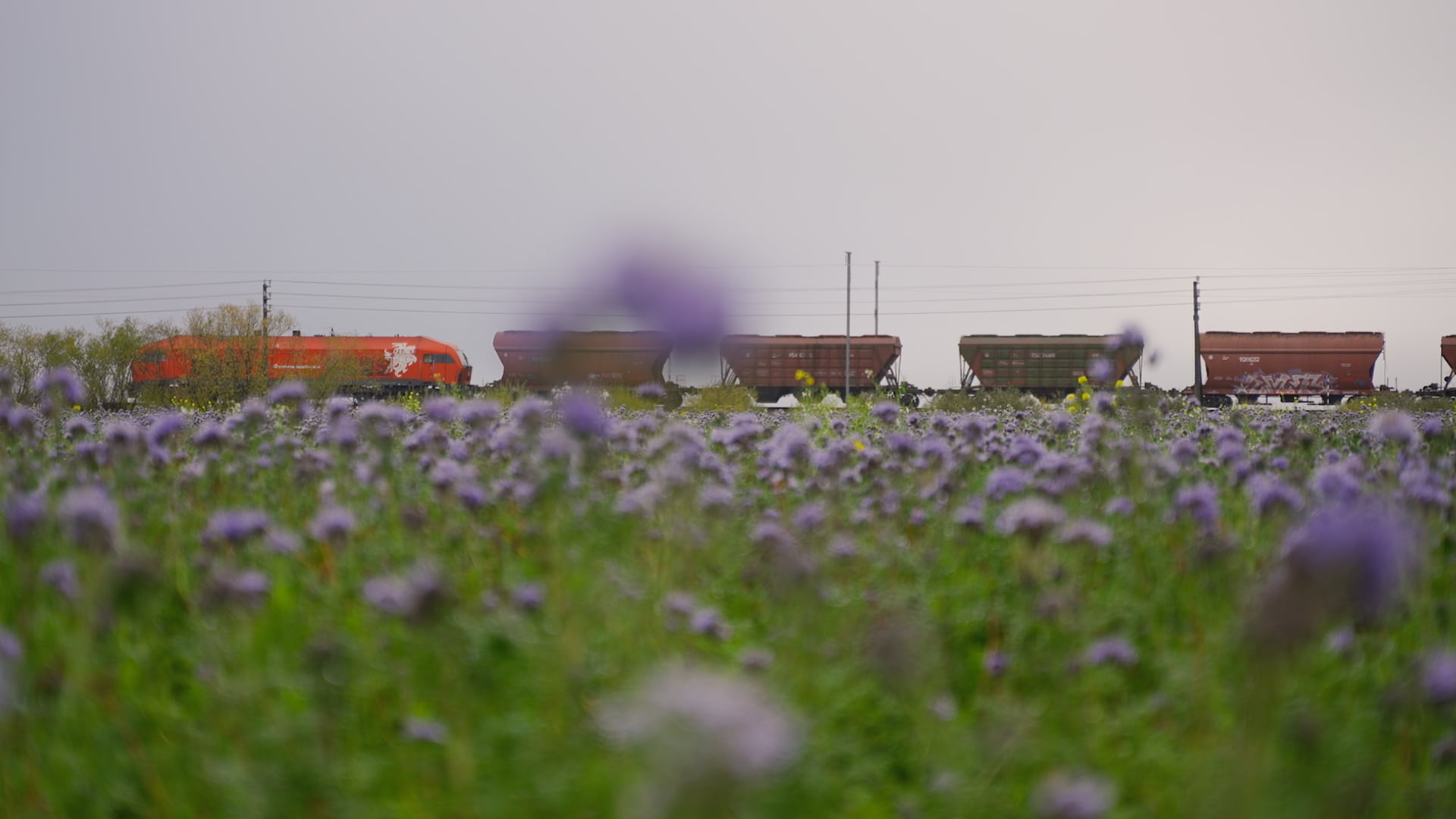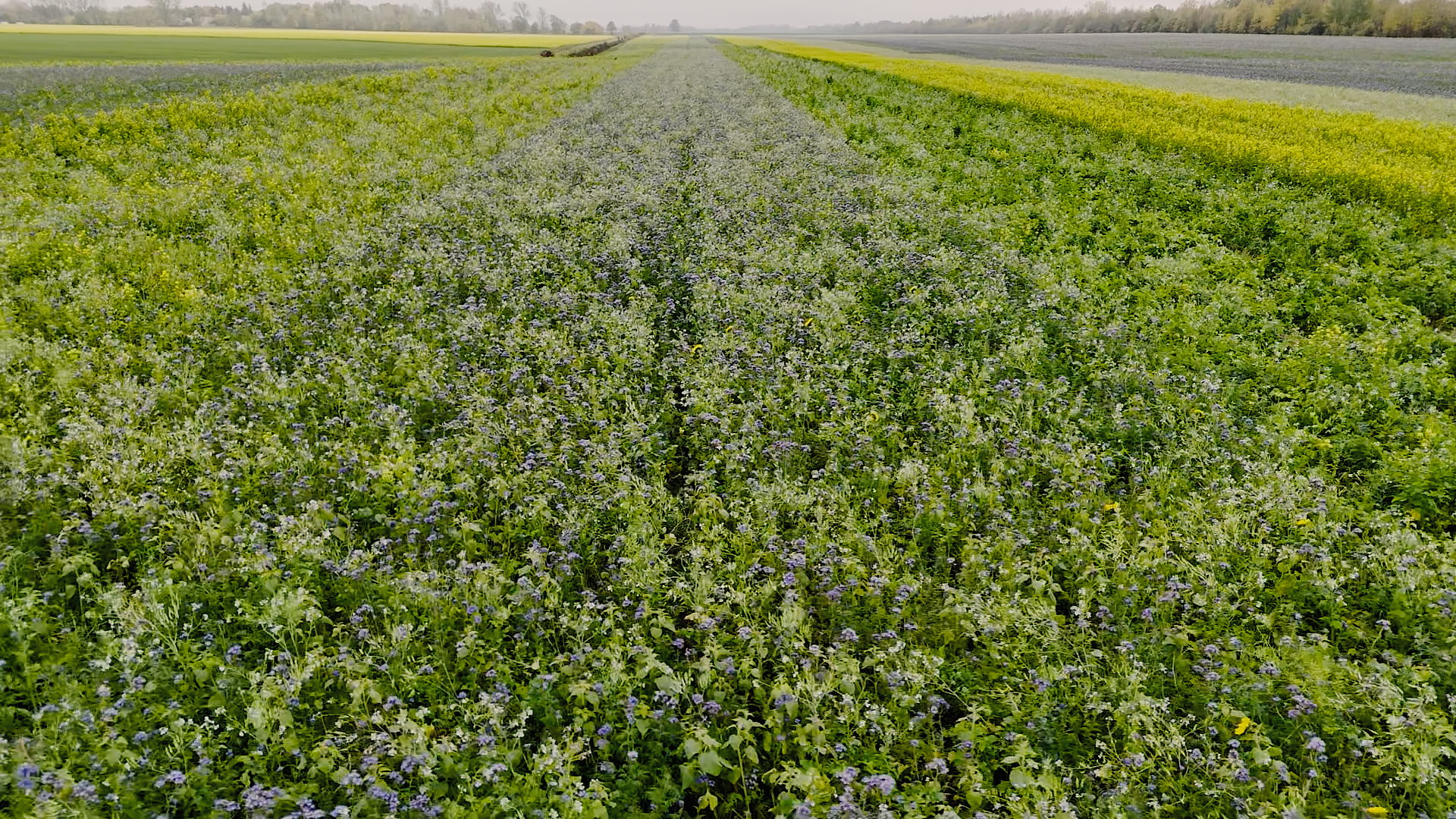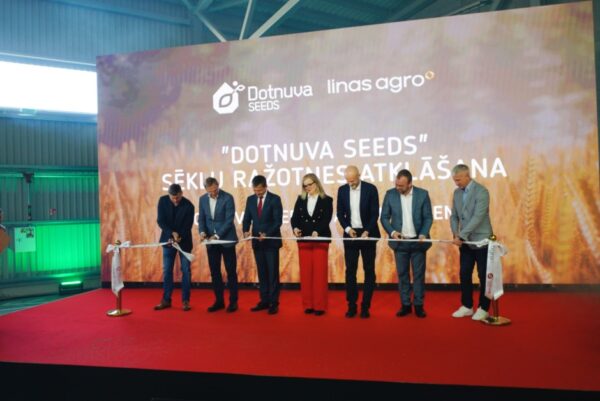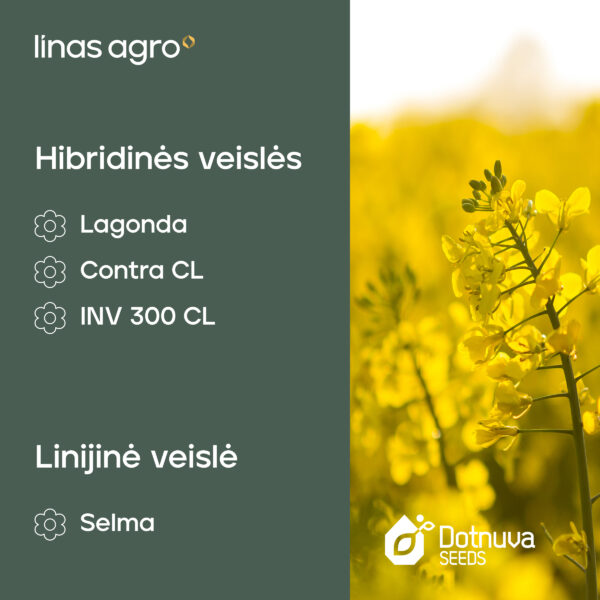
Jau kuliami žieminiai miežiai, o netrukus kombainai buvo išvairuoti ir į kviečių laukus. Norintys ūkininkauti kuo tvariau ir turėti mažiau išlaidų žemdirbiai turi prisiminti ir apie dirvožemio kokybę gerinančius tarpinius pasėlius.
Nulėmė klimato kaita
Jau prieš kelis dešimtmečius pastebėti klimato kaitos požymiai smarkiai pakeitė oro sąlygas, o atitinkamai – ir ūkininkavimo įpročius. Priklausomai nuo augalų rūšies, minimalūs jų fotosintezės poreikiai šiltuoju metų laiku būna patenkinami, jei oro temperatūra siekia 7–9 laipsnius Celsijaus.
Palyginti su 1980–1990 metais, iki 2019-ųjų šis šiltasis laikotarpis pailgėjo net 35–45 dienomis per metus. Šiltojo pavasario pradžia paankstėjo 10–20 dienų, o šiltojo rudens trukmė – net iki 25 dienų. Taip susidarė tinkamos sąlygos vadinamiesiems įsėliniams bei posėliniams augalams auginti.
Reikia tinkamai pasirinkti
Kaip aiškino bendrovės „Linas Agro“ grupei priklausančios bendrovės „Dotnuva Seeds“ produkto vadybininkas Vilmantas Petrauskas, nuėmus derlių sėjami tarpiniai pasėliai gali būti kelių rūšių.
Vienokie reikalingi tais atvejais, kai, pavyzdžiui, po žieminių rapsų ar javų pjūties ketinama sėti žieminių javus arba juos atsėliuoti. Tokiais atvejais tarpiniams pasėliams lieka apie 6–8 savaitės. Kitais atvejais, naudojant sideralinius augalus ir juos paliekant per žiemą, nuo pjūties iki aktyviosios augalų vegetacijos pabaigos lieka net 60–70 dienų.

„Jei bus sėjami tarpiniai pasėliai per žiemą iki rugpjūčio vidurio, tuomet geriausiai naudoti sideralinių augalų mišinius, kuriuose vyrauja bitinės facelijos, saulėgrąžos, vienmečiai dobilai, sėjamieji vikiai, valgomieji (šakniniai) ridikai. Po jų pavasarį sėjant ankštinius augalus (pupas, žirnius) – naudokite mažiau azotą kaupiančių augalų (vikių, dobilų), jei varpiniai javai – daugiau. Sėjant vėlesniu laikotarpiu naudojamos baltosios garstyčios, pašariniai ridikai (juos tai pat galima palikti per žiemą, stebint, kad augalai nesubrandintų sėklų. Tuomet augalus reikia susmulkinti ir rudens).
Sėjant posėlius 6 ar 8 savaitėms, norint gauti didesnį žalios masės ir šaknų derlių, labai mažėja augalų pasirinkimo galimybė. Tokiam trumpam laikotarpiui, geriausiai naudoti greitai besivystančius augalus, tokius kaip baltąsias garstyčias ir pašarinius ridikus. Kadangi šie augalai giminingi su žieminiais rapsais, reikėtų vengti jų naudojimo, jei buvo pastebėtos šaknies gumbo ligos laukuose.
Tačiau, jei ligų nepastebėta, reikėtų naudoti daugiau pašarinio ridiko. Kaip nustatyta, jie gerokai mažiau įtakoja šios ligos plitimą. Tarpiniai pasėliai pagerina dirvos struktūrą, pagerėja vandens ir maisto medžiagų judėjimas dirvoje, padeda sukaupti maisto medžiagų ir perkelti jas į pavasario – vasaros laikotarpį, kurios reikalingos kultūriniams augalams. Per žiemą naudojami pasėliai yra naudingi ir tam, kad dirvožemyje nevyktų erozija. Jie turi sukaupti pakankamai šaknų masės, pastaroji – maisto medžiagų, ankštiniai augalai sukaupia azoto. Tuomet pavasarį kultūriniai augalai gali naudotis šiomis maisto medžiagomis, o ūkininkai atitinkamai sutaupyti tręšimo priemonių sąskaita“, – kalbėjo V.Petrauskas.
Per žiemą laikomi pasėliai sukaupia ir perkelia į dirvožemį azotą pavasario sėjai. Taip pat jie užtikrina oro judėjimą dirvoje, o tai pagerina medžiagų įsisavinimą kultūriniams augalams.
Siūlo jau paruoštus mišinius
Renkantis augalus tarpinei sėjai, būtina išsiaiškinti, kaip jie atitinka dirvožemio savybes, kaip gali jas pagerinti, greitai augdami ir uždengdami dirvos paviršių. Taip pat tokie augalai negali turėti bendrų ligų ir kenkėjų su kita sėjomainos grandies rūšimi. Žemdirbiai jau seniai pamėgo garstyčių ir ridikų posėlio mišinius, kadangi šie augalai per ganėtinai trumpą laiką užaugina didelį žaliosios masės kiekį.
Tačiau, atsižvelgiant į tarpinių pasėlių sėjos laikotarpį, mišinius galima praturtinti kitais augalais – vikiais, pupomis, lubinais, žirniais ir pan.

Ūkininkams siūlomi ir jau paruošti sideralinių augalų mišiniai. Ankstyvajai sėjai (maždaug iki rugpjūčio 15 dienos) rekomenduojami „Dotnuva GRENN NFIX“ (šie augalai fiksuoja azotą dirvoje), „Dotnuva GREEN RAPS“ (tinkami rapsų sėjomainai) arba „Dotnuva GREEN BIO MASS“ (pasižymi didžiausiu žaliosios masės kiekiu).
Vėlyvajai sėjai yra skirti mišiniai „Dotnuva GREEN 1“, skirtas vidutinio sunkumo ar lengvesnėms dirvoms, bei „Dotnuva GREEN 2“ (sunkesnėms dirvoms). Kaip sakė V.Petrauskas, naudojant sideralinių augalų mišinius didžiausios naudos gaunama tuomet, kai jų pasėliai paliekami iki pavasario. Tačiau jei ruduo pasitaiko šiltas ir ilgas, tuomet augalus gali tekti susmulkinti, kad jie neimtų brandinti sėklų.
Sėklų poreikis nuolat didėja
Tiek mūsų regiono rinkose, tiek visoje Europoje pastaraisiais metais didėja sertifikuotų sėklų bei jų mišinių paklausa. Todėl šią vasarą „Linas Agro Group“ įkūrė naują įmonę „Dotnuva Seeds“, kuri stiprina sėklų gamintojo pozicijas. „Šiuo metu sėklų fabrikas Dotnuvoje per metus pagamina apie 27 tūkst. tonų sėklų, tai yra apie 90 proc. visų mūsų pajėgumų, tad, norėdami užtikrinti sklandų sertifikuotų sėklų tiekimą mūsų klientams, privalome didinti gamybinius pajėgumus.

Jau šiais metais Iecavoje (Latvija) pradėsime statyti naują sėklų ruošimo fabriką, kuris ne tik patenkins sertifikuotų sėklų poreikį Latvijos ir Estijos rinkose, bet ir leis greičiau pasiekti Latvijos ūkininkus bei užtikrinti efektyvesnę prekių logistiką į Estiją“,– numatomais plėtros planais dalijosi bendrovės „Dotnuva Seeds“ generalinis direktorius Jonas Bakšys.
Numatomos investicijos į naująjį fabriką siekia 7,4 mln. eurų. Jo pajėgumai sudarys 20 tūkst. tonų sėklų per metus, tačiau bus galimybė juos padidinti iki 30 tūkst. tonų. Čia bus ruošiamos varpinių ir ankštinių javų sėklos.
Pasak įmonės generalinio direktoriaus, prie augančio sertifikuotų sėklų Baltijos šalyse poreikio prisideda ir tai, kad ūkininkai pradeda suprasti šių sėklų generuojamą grąžą. Tam, kad klientai kasmet galėtų rinktis iš pačių geriausių sėklų veislių, įmonė bendradarbiauja net su 30 selekcininkų iš skirtingų Europos šalių. „Kuo daugiau veislių tiriama, tuo didesnė tikimybė atrasti geresnę, produktyvesnę“,– įsitikinęs įmonės „Dotnuva Seeds“ generalinis direktorius.


